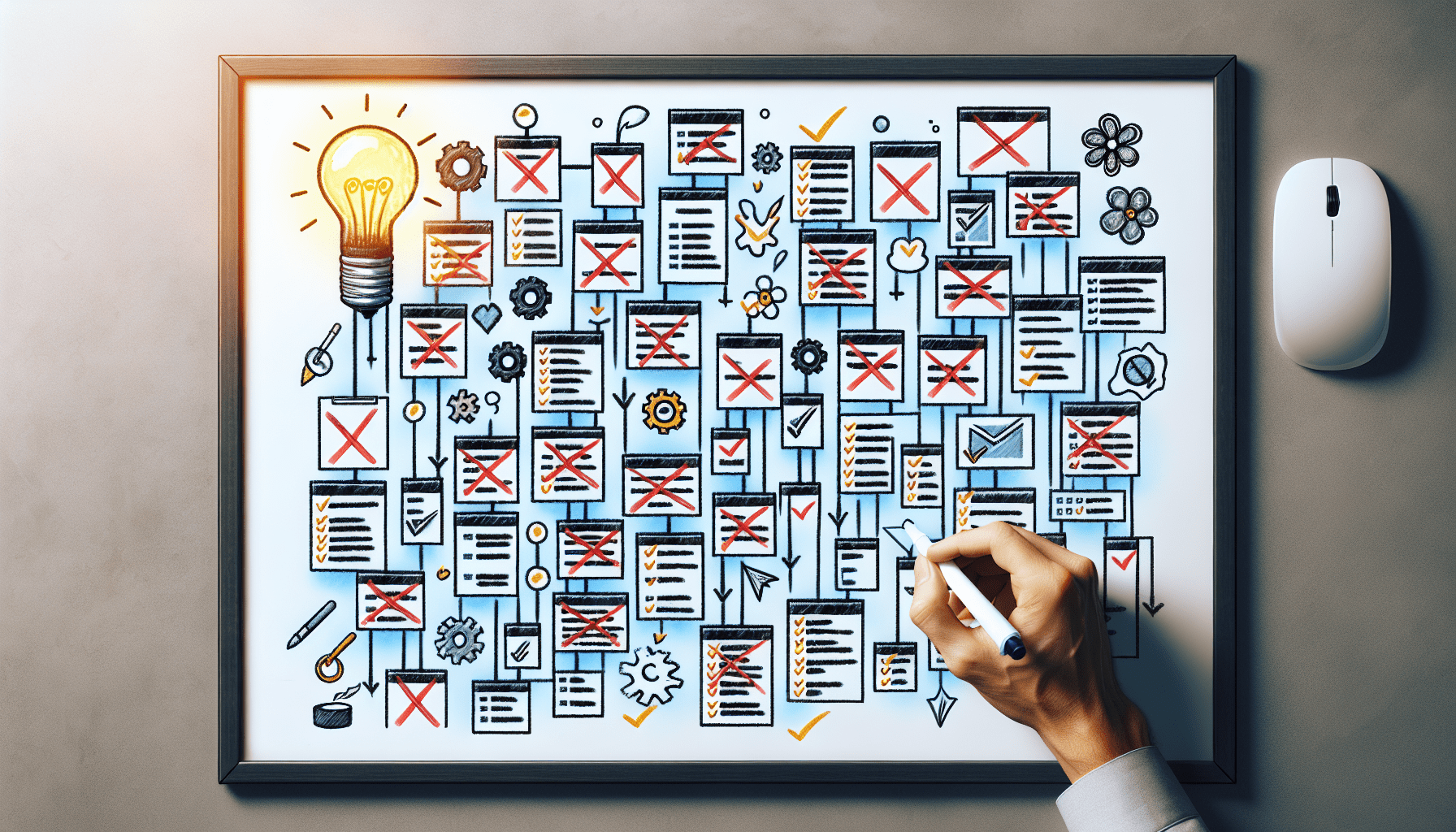
The Mindful Student: Focus Techniques For Academic Success

Are you a student seeking academic success? Look no further! In “The Mindful Student: Focus Techniques For Academic Success,” you will find a wealth of resources on mindfulness techniques, staying present, and concentration strategies. Discover how to eliminate distractions and maintain unwavering focus on your tasks. Whether you’re studying for an exam or completing a research paper, these techniques will help you cultivate a calm and centered mind, allowing you to excel in your academic pursuits. Get ready to unlock your full potential as a mindful student!
1. Understanding Mindfulness
What is mindfulness?
Mindfulness is the practice of being fully present and aware of your thoughts, feelings, and sensations in the present moment. It involves intentionally paying attention to the present without judgment or attachment to the past or future. By cultivating a state of mindfulness, you can develop a greater sense of clarity, focus, and calmness in your daily life.
The benefits of mindfulness
Practicing mindfulness offers numerous benefits for academic success. It can enhance your concentration and focus, improve memory retention, reduce stress and anxiety, promote emotional regulation, and increase overall well-being. When you are mindful, you are better able to engage with your studies, retain information more effectively, and navigate challenging academic tasks with greater ease.
How mindfulness can improve academic success
Mindfulness can significantly impact your academic performance by improving your ability to focus on your studies. By practicing mindfulness, you can train your mind to stay present and not get caught up in distractions or worries. This allows you to engage fully with the material at hand, leading to a deeper understanding and retention of information. Furthermore, mindfulness can enhance your problem-solving skills and creativity, enabling you to approach complex academic tasks with a fresh perspective.
2. Mindful Breathing Techniques
The importance of breath awareness
Breath awareness is a fundamental aspect of mindfulness practice. By paying attention to your breath, you anchor yourself in the present moment, bringing your attention away from racing thoughts and external distractions. Focusing on your breath allows you to access a state of calmness and relaxation, helping you to alleviate stress and anxiety.
Deep breathing exercises
Deep breathing exercises are a powerful tool for promoting relaxation and reducing tension. One technique you can try is diaphragmatic breathing, also known as belly breathing. To practice this, sit in a comfortable position and place one hand on your belly. Take a slow, deep breath in through your nose, allowing your belly to rise as you fill your lungs with air. Then, exhale slowly through your mouth, feeling your belly lower. Repeat this process several times, allowing each breath to be slow, deep, and intentional.
Counting breaths
Counting breaths is another effective mindfulness technique that can help you stay focused and centered. Start by finding a quiet place where you can sit comfortably. Close your eyes and take a few deep breaths to settle into the present moment. Begin counting each breath cycle, inhaling and exhaling. When you reach ten, start again from one. If your mind wanders, gently bring your attention back to the breath and resume counting. This practice allows you to cultivate greater awareness of your breath and develop a sense of mental clarity.
3. Body Scan Meditation
Exploring body sensations
Body scan meditation is a mindfulness practice that involves systematically directing your attention to different parts of your body. The goal is to cultivate awareness of bodily sensations without judgment or evaluation. As you scan through each body part, you observe any tension, discomfort, or relaxation that arises. This practice helps to develop a deeper connection between the mind and body, fostering a sense of groundedness and centeredness.
How to practice body scan meditation
To practice body scan meditation, find a quiet space where you can lie down comfortably. Close your eyes and take a few deep breaths to relax your body and mind. Start by bringing your attention to your toes. Notice any sensations present in your toes, such as warmth or tingling. Slowly move your attention up to your feet, ankles, calves, and so on, working your way up to the top of your head. Take your time with each body part, fully experiencing the sensations without judgment. This practice can be done for as little as five minutes or extended to longer durations, depending on your preference.
Benefits for concentration and focus
Body scan meditation can have a profound impact on your concentration and focus. By directing your attention to different parts of your body, you tune into the present moment and detach from distracting thoughts or worries. This heightened sense of awareness allows you to return to your studies with renewed focus and clarity. Additionally, body scan meditation promotes relaxation and reduces physical tension, creating an optimal state for enhanced concentration and productivity.
4. Mindful Eating
Eating as a mindfulness practice
Eating can be transformed into a mindfulness practice by bringing awareness and intention to the act of nourishing your body. Mindful eating involves paying attention to the colors, textures, flavors, and smells of your food, as well as to the bodily sensations and emotions that arise during the meal. By savoring each bite and eating slowly, you can develop a deeper connection with your food and cultivate a sense of gratitude for nourishment.
Savoring each bite
To practice mindful eating, start by selecting a meal or snack that you can eat without distractions. Before you begin eating, take a moment to observe your food and appreciate its appearance and aroma. As you take each bite, chew slowly and fully experience the tastes and textures. Notice how the food feels in your mouth and how it nourishes your body. Engage all your senses in the process and be fully present with your meal. This practice allows you to create a mindful relationship with food and promotes a healthier approach to eating.
Improving digestion and mental clarity
Mindful eating not only enhances your eating experience but also benefits your digestion and mental clarity. When you eat mindfully, you are more likely to chew your food thoroughly, aiding in the digestion process. Additionally, by savoring each bite and focusing on the present moment, you reduce the likelihood of overeating or making unhealthy food choices based on cravings or emotional triggers. This leads to improved energy levels and mental clarity, allowing you to approach your studies with a clear and focused mind.
5. Creating a Mindful Study Environment
Removing distractions
Creating a mindful study environment involves eliminating distractions that can hinder your focus and productivity. Start by identifying potential distractions in your study area, such as noise, clutter, or digital devices. Minimize noise by using earplugs or playing soothing background music. Clear away clutter and organize your study materials so that everything is easily accessible and visually pleasing. Additionally, consider turning off notifications on your electronic devices or using apps that block distracting websites or apps during dedicated study sessions.
Organizing study materials
Organizing your study materials is essential for maintaining a calm and focused space. Make sure you have all the necessary textbooks, notebooks, and supplies within reach. Use folders, binders, or digital folders to keep your notes and assignments organized and easily searchable. By having a system in place, you can minimize the time spent searching for materials and maximize your study efficiency.
Designing a calm and focused space
Designing a calm and focused study space involves creating an environment that promotes concentration and relaxation. Choose a well-lit area with comfortable seating and good ventilation. Consider incorporating elements of nature, such as plants or natural light, to enhance the sense of tranquility. Personalize your space with motivational quotes, artwork, or objects that inspire you. Experiment with different scents, such as lavender or peppermint, to create a calming atmosphere. By designing a space that reflects your preferences and cultivates a sense of peacefulness, you can optimize your study sessions and enhance your academic performance.
6. Time Management and Prioritization
Setting realistic study goals
Effective time management is crucial for academic success. Start by setting realistic study goals that align with your workload and available time. Break down larger tasks into smaller, manageable chunks, and assign specific timeframes for each task. Be mindful of your energy levels and schedule breaks to rest and recharge. By setting achievable goals, you can maintain motivation, avoid overwhelm, and make consistent progress towards academic success.
Using time blocking techniques
Time blocking is a powerful technique for organizing your schedule and optimizing your productivity. Start by creating a visual representation of your day or week, blocking out dedicated study periods, classes, and other commitments. Assign specific tasks to each time block, ensuring that they align with your prioritized goals. Be mindful of setting realistic time limits for each task and build in buffer time for unexpected interruptions or delays. By utilizing time blocking, you can maintain focus, enhance discipline, and make the most of your available study time.
Identifying and prioritizing important tasks
Identifying and prioritizing important tasks is essential for effective time management. Begin by evaluating your tasks and assignments, considering their urgency and significance. Use a prioritization system, such as the Eisenhower Matrix, to categorize tasks into four quadrants: urgent and important, important but not urgent, urgent but not important, and not urgent or important. Focus on completing tasks in the urgent and important quadrant first, then move on to tasks in the other categories. By being mindful of your priorities and allocating your time accordingly, you can ensure that your efforts align with your academic goals and deadlines.
7. Mindful Technology Use
Limiting screen time
Mindful technology use involves being intentional and aware of how much time you spend engaging with screens and digital devices. While technology has its benefits, excessive screen time can contribute to distraction, procrastination, and eye strain. Set boundaries for yourself by scheduling regular breaks from screens and engaging in offline activities. Consider using the “20-20-20” rule, where every 20 minutes, you take a 20-second break to look at something 20 feet away. This practice allows your eyes to rest and prevents digital fatigue.
Using apps for focus and productivity
Technology can also be a valuable tool for promoting focus and productivity. Numerous apps and digital tools are available to assist with time management, organization, and concentration. Utilize productivity apps that allow you to set timers, block distracting websites, or track your progress with tasks or assignments. Experiment with apps that incorporate mindfulness and meditation practices, offering guided sessions or reminders to take breaks and refocus. By harnessing the power of technology mindfully, you can leverage its benefits while minimizing its potential drawbacks.
Digital detox strategies
To maintain a healthy relationship with technology, it is important to engage in regular digital detoxes. Set aside specific periods, such as weekends or evenings, where you disconnect from screens entirely. Use this time to engage in activities that promote well-being and balance, such as spending time outdoors, pursuing hobbies, or connecting with loved ones face-to-face. By consciously taking breaks from technology, you can recharge, reset, and approach your studies with renewed focus and clarity.
8. Mindful Physical Activity
Benefits of exercise for cognitive function
Physical activity plays a vital role in supporting cognitive function and overall well-being. Engaging in regular exercise has been shown to improve memory, enhance concentration, boost mood, and reduce stress. By incorporating physical activity into your daily routine, you can optimize your brain health and enhance your academic performance.
Incorporating mindfulness into physical activities
In addition to the physical benefits, exercise can also be an opportunity to practice mindfulness. Whether you are walking, running, practicing yoga, or engaging in any other form of physical activity, bring your attention to the sensations in your body, such as the rhythm of your breath, the feeling of your feet hitting the ground, or the stretch in your muscles. Focus on the present moment and let go of any distracting thoughts or worries. By combining physical movement with mindfulness, you can experience a greater sense of clarity, relaxation, and enjoyment during your workouts.
Finding a balance between studying and movement
Finding a balance between studying and physical movement is essential for overall well-being. While dedicating time to academic pursuits is important, neglecting movement and exercise can lead to mental and physical stagnation. Incorporate movement breaks into your study routine, such as taking short walks, doing stretching exercises, or practicing yoga. These breaks can help recharge your brain, improve blood flow, and increase your energy levels, leading to enhanced focus and productivity when you return to your studies. By prioritizing movement, you can maintain a healthy balance between academic responsibilities and physical well-being.
9. Mindful Stress Management
Recognizing signs of stress
Stress is a common experience among students, but it is important to be mindful of its impact on your well-being and academic performance. Recognize the signs of stress, such as difficulty concentrating, racing thoughts, irritability, or physical symptoms like headaches or stomachaches. By being aware of these signs, you can take proactive steps to manage stress and prevent it from overwhelming you.
Breathing and relaxation techniques for stress relief
When stress arises, focusing on your breath and practicing relaxation techniques can be immensely helpful. Engage in deep breathing exercises, such as diaphragmatic breathing, to activate your body’s relaxation response. Take breaks to engage in calming activities, such as listening to soothing music, practicing meditation, taking a warm bath, or engaging in creative outlets like drawing or journaling. By incorporating these stress relief techniques into your daily routine, you can cultivate a sense of calm and resilience in the face of academic challenges.
Mindfulness-based stress reduction practices
Mindfulness-based stress reduction (MBSR) practices can be particularly effective in managing stress. MBSR programs typically incorporate mindfulness meditation, gentle yoga, and body awareness to help individuals cultivate resilience and a greater sense of control over their stressors. Consider enrolling in a structured MBSR course or integrating mindfulness-based practices into your routine through guided meditations or online resources. By developing a mindful approach to stress management, you can navigate academic pressures with greater equanimity and well-being.
10. Cultivating Self-Compassion
Overcoming self-criticism and perfectionism
Many students struggle with self-criticism and perfectionism, which can hinder academic success and well-being. Cultivating self-compassion involves treating yourself with kindness, understanding, and acceptance, even in the face of setbacks or perceived shortcomings. Practice self-awareness and notice when self-critical thoughts arise. Challenge these thoughts by offering yourself words of kindness and reminding yourself that mistakes and imperfections are a natural part of the learning process. By cultivating self-compassion, you can free yourself from the burden of perfectionism and enhance your motivation and resilience.
Practicing self-acceptance and kindness
Practicing self-acceptance and kindness involves nurturing a positive relationship with yourself. Engage in self-care activities that promote well-being, such as getting enough sleep, eating nourishing foods, and engaging in activities that bring you joy. Take time to reflect on your successes and strengths, even in the midst of challenges. Surround yourself with a supportive network of friends, family, or mentors who uplift and encourage you. By practicing self-acceptance and kindness, you can cultivate a strong sense of self-worth and enhance your overall academic experience.
Building resilience and motivation
Developing resilience and motivation is crucial for academic success. When faced with setbacks or obstacles, view them as opportunities for growth rather than failures. Embrace a growth mindset, knowing that with effort and persistence, you can overcome challenges and improve. Set realistic goals and break them down into actionable steps. Reward yourself for completing milestones along the way, and celebrate your achievements, no matter how small. By building resilience and motivation, you can maintain a positive outlook and persevere through academic challenges with determination and confidence.
In conclusion, mindfulness offers a wealth of techniques and practices that can enhance your academic success. By incorporating mindfulness into your daily life, you can develop greater focus, concentration, and resilience. Whether through breath awareness, body scan meditation, mindful eating, creating a mindful study environment, managing time effectively, mindful technology use, engaging in mindful physical activity, practicing stress management, or cultivating self-compassion, each aspect of mindfulness contributes to a holistic approach to academic excellence. Embrace mindfulness as a powerful tool for navigating the demands of academia and enjoy the benefits it brings to your academic journey.





















